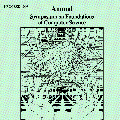We present novel results for fast mixing of Glauber dynamics using the newly introduced and powerful Spectral Independence method from [Anari, Liu, Oveis-Gharan: FOCS 2020]. We mainly focus on the Hard-core model and the Ising model. We obtain bounds for fast mixing with the parameters expressed in terms of the spectral radius of the adjacency matrix, improving on the seminal work in [Hayes: FOCS 2006]. Furthermore, we go beyond the adjacency matrix and establish -- for the first time -- rapid mixing results for Glauber dynamics expressed in terms of the spectral radius of the Hashimoto non-backtracking matrix of the underlying graph $G$. Working with the non-backtracking spectrum is extremely challenging, but also more desirable. Its eigenvalues are less correlated with the high-degree vertices than those of the adjacency matrix and express more accurately invariants of the graph such as the growth rate. Our results require ``weak normality" from the Hashimoto matrix. This condition is mild and allows us to obtain very interesting bound. We study the pairwise influence matrix ${I}^{\Lambda,\tau}_{G}$ by exploiting the connection between the matrix and the trees of self-avoiding walks, however, we go beyond the standard treatment of the distributional recursions. The common framework that underlies our techniques we call the topological method. Our approach is novel and gives new insights into how to establish Spectral Independence for Gibbs distributions. More importantly, it allows us to derive new -- improved -- rapid mixing bounds for Glauber dynamics on distributions such as the Hard-core model and the Ising model for graphs that the spectral radius is smaller than the maximum degree.
翻译:暂无翻译




